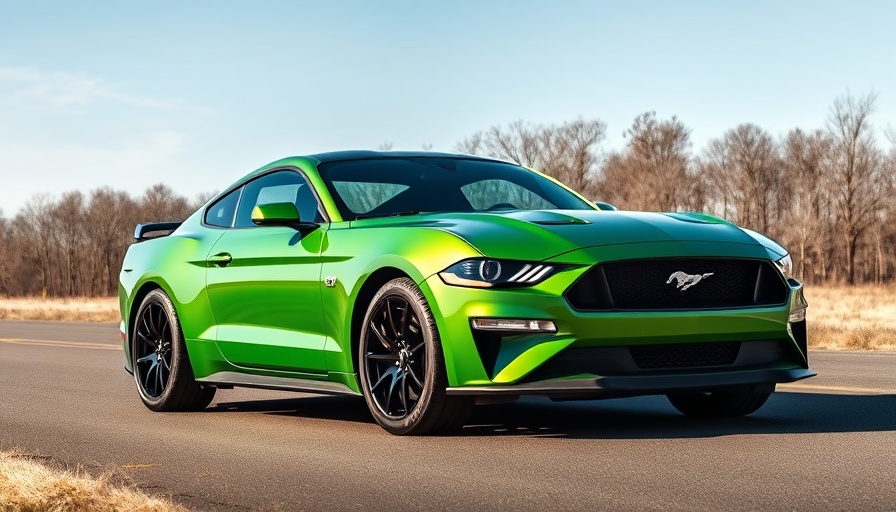
Tariff Pressure: A Relentless Storm for Automakers
The global auto industry is feeling the pressure of a trade environment reshaped by rising tariffs, which is proving to be a costly endeavor for giants like Stellantis and General Motors (GM). With substantial losses reported in the first half of 2025, questions are raised about the future stability of some of the world's biggest automobile producers. As the scale of financial impacts become clearer, consumers are left wondering how these economic shifts may affect both prices and availability of vehicles.
Stellantis: A Legacy Under Siege
Stellantis, the parent company behind well-known brands such as Jeep and Chrysler, recently reported a staggering net loss of $2.68 billion. The company's loss can be largely attributed to newly implemented tariffs alongside a downturn in North American sales—a market where Stellantis had previously thrived. The most striking figure comes from a reported 25 percent contraction in sales in that same region, equating to roughly 109,000 units lost. This decline is compounded by what the company refers to as “product transition factors” and weak fleet sales, signaling broader challenges ahead.
With a new CEO, Antonio Filosa, taking over the reins, Stellantis is tasked with recalibrating its strategies amidst this tumultuous landscape. Though they see growth potential in international markets like the Middle East and Africa, the company's stronghold in the U.S. market has undeniably weakened, indicating a critical need for strategic pivots.
General Motors: Navigating Turbulent Waters
For GM, the challenges are similarly profound, albeit different in nature. The company reported a $1.1 billion revenue decrease year-over-year in the second quarter. The implications of tariffs are particularly pressing given GM’s significant reliance on imports, especially from Korea. These tariffs have pushed production costs to new heights, primarily affecting their popular crossover SUVs like the Equinox and Trailblazer, prompting GM to adjust manufacturing strategies. CFO Paul Jacobson noted that they’re hoping to reduce these tariff-related costs by a significant margin, but results from these alterations will take time to manifest.
While the financial landscape appears challenging, GM's sales spike in April and May brought some positive news — it posted record revenue of $91 billion for the first half of the year, largely driven by consumer rushes to purchase vehicles before anticipated price hikes take effect. Despite a promising sales outlook for SUVs, concerns loom over the electric vehicle (EV) division, where the impact of lost federal EV incentives is beginning to bite. The competition grows fiercer, with Chevrolet maintaining the status of the second-best-selling EV brand in the U.S.
Global Trends in the Automotive Industry
The automotive sector is facing a tumultuous moment in history, with trade policies and tariffs reshaping market dynamics. As we explore the ongoing shifts, it’s crucial to reflect on historical contexts that have led to the current state of affairs. The automotive industry, boasting a legacy stretching back over a century, saw rapid transformations during the 1920s with the rise of mass production techniques and a customer-driven market. Fast forward to today, the sector grapples with modern consumer expectations, environmental standards, and now, the hurdles brought on by trade tensions.
Future Forecast: What Lies Ahead for Consumers and Automakers
Looking beyond the immediate financial impacts, the automotive sector must navigate a complex future landscape shaped by shifting global trade policies. The ongoing tensions could force manufacturers to reevaluate their sourcing and manufacturing strategies, potentially leading to higher automobile prices for consumers. As automakers like Stellantis and GM grapple with balancing cost control and production needs, consumers may see increased waiting periods for vehicles or limited inventory on dealership lots—all intertwined with challenges stemming from tariffs and trade pressures.
Actionable Insights for Automotive Stakeholders
These developments highlight the importance of understanding the current economic landscape for industry stakeholders, ranging from manufacturers to consumers. Automakers must consider how best to adapt their production lines and supply chains, while consumers need to stay informed about market trends when making purchasing decisions. One proactive approach for consumers is to connect with trusted dealerships for anticipating potential price changes or vehicle shortages due to shifts in manufacturing strategies.
Conclusion: Preparing for an Evolving Auto Landscape
The automotive industry stands at a critical juncture shaped by tariffs, shifting markets, and evolving consumer needs. Understanding the dynamics at play is essential for everyone involved. As automakers work to stabilize and adapt, consumers must stay informed and be prepared to navigate the complexities of the evolving landscape.
 Add Row
Add Row  Add
Add 




Write A Comment